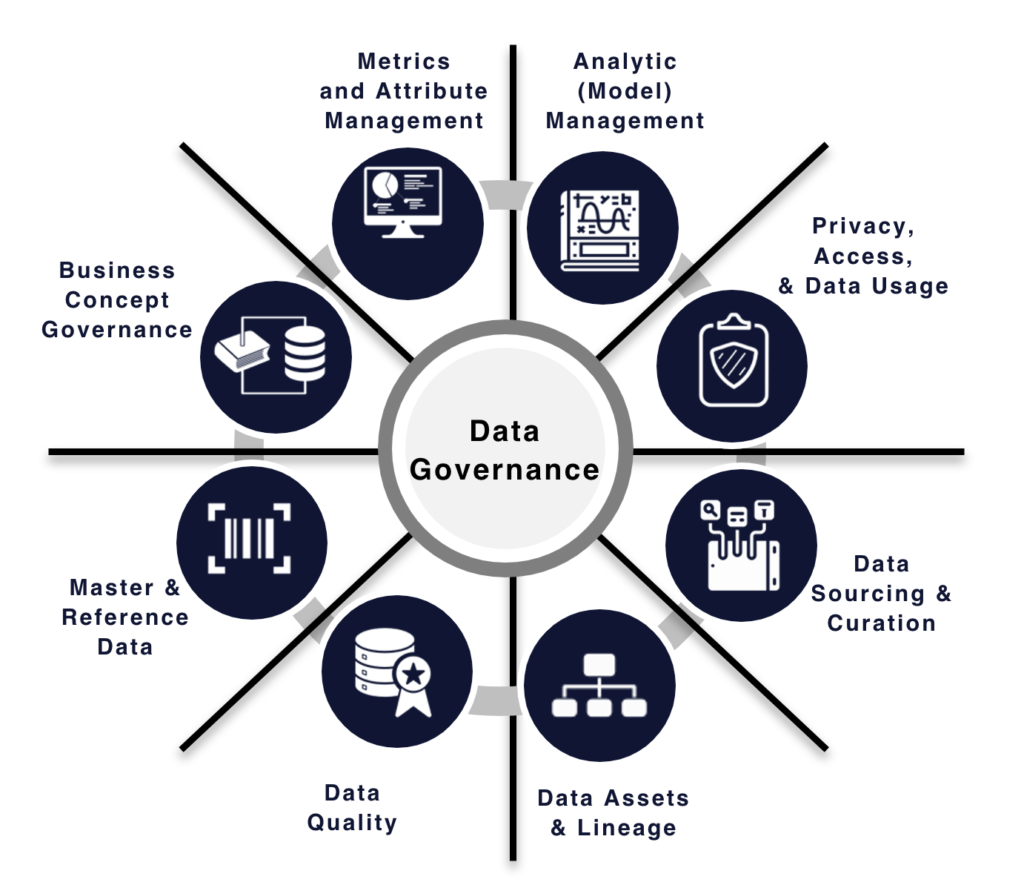Data governance refers to the framework of policies, standards, and practices that ensure AI systems are trained and tested on high-quality, relevant, and representative data. Under the EU AI Act, data governance is a core requirement for high-risk AI systems, as poor data quality can lead to inaccurate outcomes, systemic bias, and compliance violations. It forms the foundation of trustworthy, lawful, and non-discriminatory AI.

1. Background and Establishment
In artificial intelligence, data is destiny. Every model’s behavior—its predictions, classifications, decisions—is shaped by the quality and structure of the data it learns from. Recognizing this, the EU Artificial Intelligence Act makes data governance a legal cornerstone, particularly for high-risk AI systems.
Inaccurate, incomplete, or biased data can lead to flawed models that discriminate, malfunction, or violate fundamental rights. Therefore, data governance under the AI Act is not merely technical hygiene—it is a regulatory imperative.
2. Purpose and Role in the EU AI Ecosystem
Data governance ensures that AI systems are:
- Trained on relevant, representative, and up-to-date data
- Evaluated using accurate and appropriate testing sets
- Designed to prevent bias, unfair outcomes, or data-based discrimination
- Transparent and traceable in terms of data origin and processing
- Safe and legally compliant from the earliest stages of development
By embedding data governance, the EU aims to mitigate harm at the source, rather than respond after deployment.
3. Key Contributions and Impact
A strong data governance framework enables:
- Reduction of algorithmic bias and systemic discrimination
- Assurance of accuracy, reliability, and validity of AI outputs
- Protection of data subjects’ rights under GDPR and EU Charter principles
- Enhanced auditing, traceability, and regulatory defensibility
- Improved trust among users, regulators, and stakeholders
Without data governance, even the most sophisticated AI systems become legally vulnerable and ethically questionable.
4. Connection to the EU AI Act and the EU AI Safety Alliance
The EU AI Act mandates data governance primarily through:
- Article 10 – Establishes comprehensive data governance obligations for high-risk AI systems, including: Data quality checks, Data relevance and representativeness, Data preprocessing and gap handling, Bias detection and mitigation
- Annex IV – Requires technical documentation of datasets, validation methods, and data management practices
The EU AI Safety Alliance helps organizations implement these requirements by offering:
- Data governance templates and audit tools
- Dataset evaluation checklists
- Bias testing protocols for training and test data
- Legal-technical harmonization between the EU AI Act and GDPR
The Alliance ensures your data governance isn’t just technically robust—it’s legally resilient.
5. Responsibilities of AI Providers and Users
AI providers are primarily responsible for:
- Selecting and curating training, validation, and test datasets
- Ensuring dataset diversity and coverage
- Documenting data sourcing, annotation, and curation processes
- Testing for demographic skews and embedded prejudices
AI users (deployers) must:
- Operate systems within the intended data parameters
- Monitor for data drift or unexpected system behavior
- Report anomalies linked to data misuse or contextual mismatch
Collaboration across data scientists, legal teams, and ethics committees is essential for meaningful governance.
6. Elements of a Compliant Data Governance Strategy
A successful data governance system should include:
- Data sourcing documentation – origin, purpose, and legality of all datasets
- Quality assurance protocols – accuracy, completeness, and consistency checks
- Representativeness analysis – demographic and contextual fairness testing
- Data preprocessing records – how missing data, duplicates, or anomalies are handled
- Bias detection and mitigation reports
- Secure data storage and access controls
- Alignment with GDPR requirements for personal data processing and anonymization
These elements must be systematically documented and updated throughout the AI lifecycle.
7. How to Implement Data Governance Under the EU AI Act
To operationalize compliance:
- Start with a data inventory across all training and testing assets
- Conduct a representativeness audit and bias risk assessment
- Establish clear data documentation standards (linked to Annex IV)
- Integrate quality gates at each stage of the AI pipeline
- Engage with the EU AI Safety Alliance for validation tools and templates
- Ensure traceability—you should know where every data point came from and how it was processed
- Align your governance framework with ISO/IEC 42001 and CEN/CENELEC standards for AI management
Governance must be proactive, dynamic, and embedded by design—not tacked on as an afterthought.

